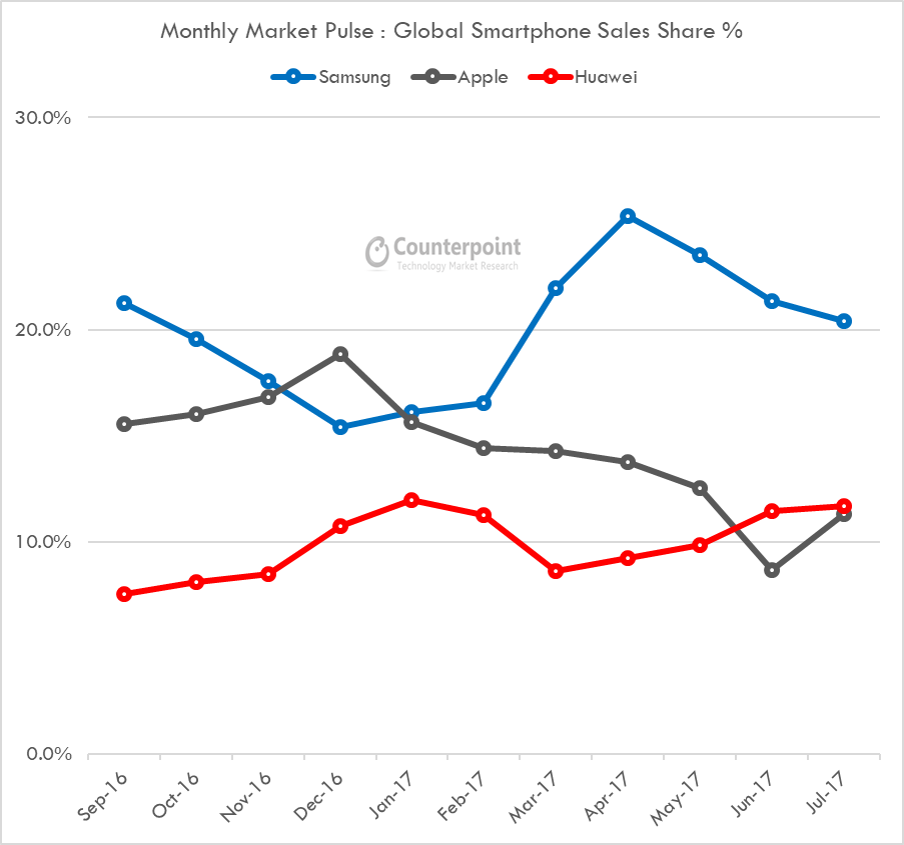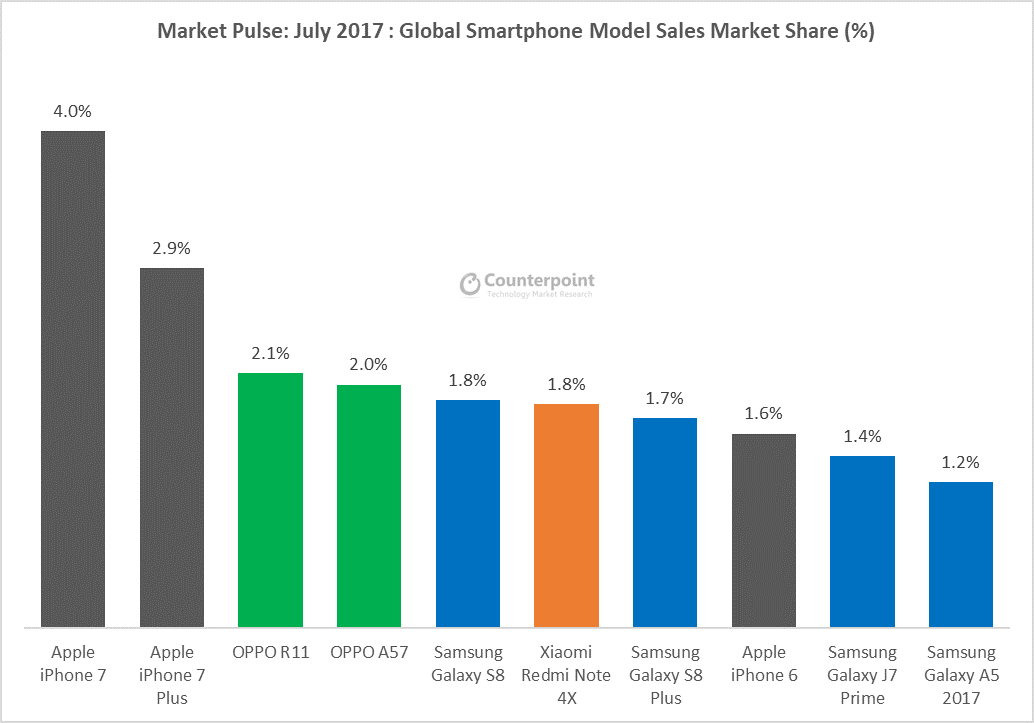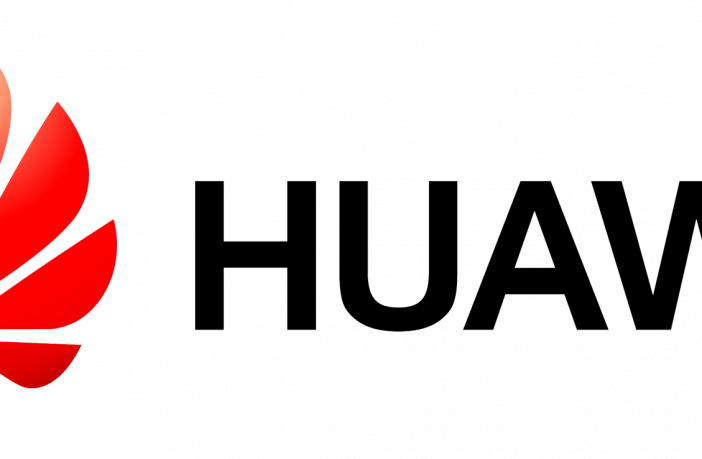According to the latest research from Counterpoint’s Market Pulse for July 2017, Huawei has surpassed Apple in global smartphone sales consistently for June and July. With August sales looking strong for the Chinese vendor, a hat-trick for Huawei could be on the cards.
Discussing this key competitive development, Counterpoint’s Research Director Peter Richardson, notes, “This is a significant milestone for Huawei, the largest Chinese smartphone brand with a growing global presence. It speaks volumes for this primarily network infrastructure vendor on how far it has grown in the consumer mobile handset space in the last three to four years. The global scale Huawei has been able to achieve can be attributed to its consistent investment in R&D and manufacturing, coupled with aggressive marketing and sales channel expansion.”
Mr. Richardson adds, “While this streak could be temporary considering the annual iPhone refresh is just around the corner, it nevertheless underscores the rate at which Huawei has been growing. However, a weak presence in the South Asian, Indian and North American markets limits Huawei’s potential in the near-to mid-term to take a sustainable second place position behind Samsung. Huawei is over-dependent on its home market China where it enjoys the leadership position and operator-centric markets in Europe, Latin America and Middle East.”

Talking about future prospects and other findings, Counterpoint’s Associate Director, Tarun Pathak, notes, “The growth of Chinese brands is an important trend which no player in the mobile ecosystem can ignore. Chinese brands with their dominant position in key markets such as China, Europe, Asia and Latin America have restricted the growth prospects for leading global brands such as Samsung and Apple. Chinese brands are growing swiftly thanks not only to smartphone design, manufacturing capability and rich feature sets, but also by out-smarting and out-spending rivals in sales channels, go-to-market and marketing promotion strategies.”
Mr Pathak, adds, “Huawei, Oppo, Vivo and Xiaomi have successfully gained access to key supply chain partners, which has allowed them to launch designs with bezel-free, full displays, Augmented Reality, in-house chipsets and advanced camera features, that have kept them toe-to-toe with rivals. These players have become as equally important as Samsung or Apple to the global supply chain, application developers and distribution channels, as they continue to grow in scale more rapidly than the incumbent market share leaders.”
Commenting on the best-selling models in the month of July, Senior Analyst, Pavel Naiya highlighted, “Apple continued to drive its flagship momentum with iPhone 7 & 7 Plus; still the world’s best-selling models. OPPO has been one of the fastest growing brands globally thanks to the popularity of models including the flagship OPPO R11 and the mid-tier OPPO A57 that captured third and fourth spots respectively. These were followed by Samsung’s flagship Galaxy S8, Xiaomi Redmi Note 4X and Samsung Galaxy S8+. Apple’s 32GB refresh of the venerable iPhone 6 enabled it to regain momentum during the month, with popularity across prepaid markets to edge out Samsung’s Galaxy J7.
Mr Naiya, added. “While Huawei climbed to be the world’s second largest brand overall, it is surprising to see none of its models breaking into the top ten rankings. This is due to a multiple SKU portfolio that currently lacks a true hero device. While having a diverse portfolio allows Huawei to fight on multiple fronts, it does little to build overall brand recognition; something Huawei badly needs if it is continue to gain share. While Huawei has trimmed its portfolio, it likely needs to further streamline its product range like Oppo and Xiaomi have done – putting more muscle behind fewer products.”




